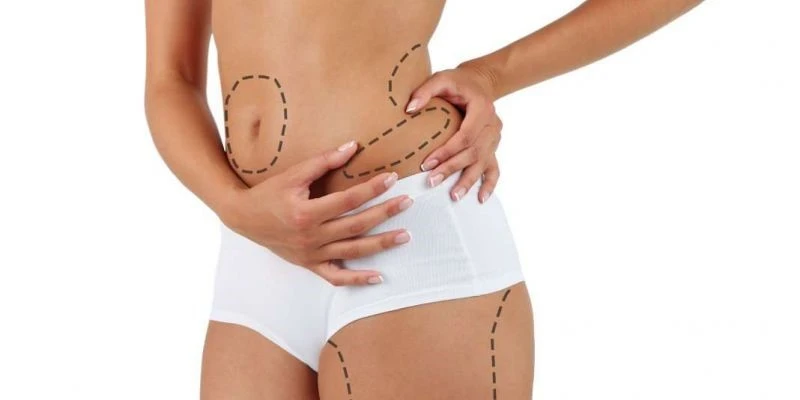Liposuction, while a widely sought-after cosmetic procedure, carries inherent risks that warrant thorough understanding. Patients often focus on aesthetic benefits, yet potential complications, including severe outcomes like death, are critical considerations. Data from the American Society of Plastic Surgeons reveals a reported mortality rate of 1 in 47,400 procedures, emphasizing the necessity for informed patient consent. These risks are not uniform; they vary significantly based on factors such as the volume of fat removed, the patient’s underlying health, and the surgeon’s expertise. Furthermore, specific techniques and the simultaneous performance of other procedures demonstrably influence the likelihood and severity of adverse events. Understanding the nuances of these risks empowers both practitioners and prospective patients to make well-informed decisions regarding liposuction.
Table of Contents
Common Side Effects vs Serious Complications: What to Expect?
Understanding the distinction between expected side effects and serious complications helps patients make informed decisions about body contouring procedures. The following comparison outlines the key differences in frequency and severity:
| Complication Type | Frequency | Examples | Severity Level |
|---|---|---|---|
| Common Side Effects | 70-90% of cases | Bruising, swelling, temporary numbness | Mild to moderate |
| Moderate Complications | 5-15% of cases | Skin irregularities, prolonged swelling | Moderate |
| Serious Complications | 1-5% of cases | Infection, blood clots, fluid accumulation | Severe |
| Life-threatening Events | 0.02-0.1% of cases | Pulmonary embolism, severe bleeding | Critical |
Common liposuction complications typically resolve within weeks without intervention. These include temporary skin discolouration, mild pain, and localised swelling that gradually subsides during the healing process.
Liposuction side effects long-term encompass permanent changes such as altered skin sensation, minor contour irregularities, and occasional asymmetry. These effects occur in approximately 10-20% of patients and often improve significantly within six months.
Serious complications of liposuction require immediate medical attention and include:
- Deep vein thrombosis or pulmonary embolism
- Severe infections requiring antibiotic treatment
- Excessive fluid loss leading to shock
- Perforation of internal organs
- Fat embolism syndrome
Selecting a qualified plastic surgeon certified by the British Association of Aesthetic Plastic Surgeons significantly reduces complication rates. Accredited facilities with proper emergency protocols ensure optimal safety standards during procedures.
What are the main risks of liposuction depends largely on patient selection and surgical technique. Patients with underlying medical conditions, those undergoing extensive fat removal, or procedures performed in non-accredited facilities face elevated risk profiles.
Prevention strategies include comprehensive preoperative assessment, limiting fat removal volumes to safe parameters, and maintaining sterile surgical environments. Proper patient education about realistic expectations and recovery requirements further minimises adverse outcomes.
The mortality rate for liposuction procedures performed by certified surgeons in accredited facilities remains exceptionally low at 0.02%. This statistic emphasises the importance of choosing experienced practitioners who prioritise patient safety over aggressive marketing claims.
Board-certified surgeons utilise advanced techniques such as tumescent anaesthesia and ultrasonic-assisted methods to enhance safety profiles. These approaches reduce bleeding, improve precision, and minimise tissue trauma compared to traditional methods.
Regular monitoring during recovery periods allows early detection of complications requiring intervention. Patients receive detailed aftercare instructions and emergency contact information to ensure prompt medical attention when necessary. Cosmetic Surgery Risks Safety Prevention is essential to minimize complications and death risk that occur during or after liposuction. Continuous communication between healthcare providers and patients plays a crucial role in ensuring successful recovery outcomes.
Is Liposuction Worth the Risk? Analyzing Safety Concerns
The question of whether is liposuction dangerous remains at the forefront of patient concerns considering body contouring procedures. Research indicates that liposuction carries inherent risks, yet the procedure demonstrates acceptable safety profiles when performed under appropriate conditions. Understanding these risk factors enables informed decision-making regarding cosmetic surgery interventions.
Risk-Benefit Analysis of Liposuction Procedures
Modern liposuction techniques present varying degrees of risk depending on procedural factors and patient characteristics. The following considerations highlight key safety elements:
- Procedural volume limitations significantly impact complication rates, with extensive procedures carrying higher risks
- Patient health status directly correlates with surgical outcomes and recovery periods
- Facility accreditation standards ensure appropriate emergency protocols and equipment availability
- Surgical technique selection influences both immediate and long-term safety outcomes
Safety Statistics and Evidence-Based Information
Clinical data demonstrates that is liposuction safe depends largely on adherence to established protocols. Studies indicate mortality rates ranging from 1 in 5,000 to 1 in 20,000 procedures, with variations attributed to surgical complexity and facility standards. These statistics emphasise the importance of comprehensive pre-operative assessment and appropriate candidate selection.
| Safety Factor | High-Risk Scenario | Low-Risk Approach |
|---|---|---|
| Procedure Volume | >5 litres fat removal | <4 litres fat removal |
| Facility Type | Non-accredited clinic | Hospital or accredited facility |
| Anaesthesia Method | General anaesthesia for minor procedures | Local/tumescent anaesthesia |
| Surgeon Qualifications | Limited plastic surgery training | Board-certified plastic surgeon |
The data demonstrates clear correlations between safety measures and complication reduction strategies.
Minimising Surgical Risks Through Proper Selection
The risks of liposuction surgery decrease substantially when patients undergo thorough medical evaluation and realistic expectation setting. Cardiovascular assessment, bleeding disorder screening, and psychological readiness evaluation form essential components of safe practice protocols. Additionally, selecting surgeons with extensive liposuction experience and facilities equipped with appropriate monitoring equipment creates optimal safety conditions.
Infection prevention protocols, including sterile technique maintenance and appropriate antibiotic prophylaxis, further reduce complications. These evidence-based approaches collectively demonstrate that liposuction safety depends primarily on methodical planning, appropriate candidate selection, and adherence to established surgical standards rather than inherent procedural dangers.
Anesthesia-Related Complications During Liposuction Procedures
Anesthetic complications represent a significant concern during liposuction procedures, requiring comprehensive understanding of risk factors and prevention strategies. Lidocaine toxicity stands as the most prevalent anesthesia-related complication, particularly when tumescent technique volumes exceed recommended limits. Systemic absorption of local anesthetics can lead to central nervous system depression and cardiovascular instability.
The following anesthesia-related risks require careful monitoring throughout liposuction procedures:
- Cardiovascular depression resulting from excessive local anesthetic absorption
- Respiratory complications including airway obstruction and ventilation difficulties
- Allergic reactions to amide or ester-type local anesthetics
- Methemoglobinemia from prilocaine or benzocaine administration
- Epinephrine-induced arrhythmias in patients with cardiac conditions
- Fluid overload from excessive tumescent solution infiltration
Comparison studies demonstrate varying complication rates between different anesthetic approaches used in liposuction procedures:
| Anesthetic Method | Complication Rate | Primary Risks | Monitoring Requirements |
|---|---|---|---|
| Tumescent Local | 0.05-0.1% | Lidocaine toxicity, fluid overload | Continuous vital signs |
| Conscious Sedation | 0.2-0.4% | Respiratory depression, oversedation | Advanced monitoring |
| General Anesthesia | 0.8-1.2% | Airway complications, cardiac events | Full anesthetic monitoring |
Plasma lidocaine levels peak approximately 12-16 hours following tumescent infiltration, necessitating extended observation periods for high-volume procedures. Research indicates that maximum safe dosages should not exceed 55mg/kg of lidocaine when using tumescent technique. Exceeding these parameters significantly increases the risk of systemic toxicity manifestations.
Epinephrine concentrations in tumescent solutions require careful calculation to prevent cardiovascular complications. Standard concentrations of 1:1,000,000 provide adequate vasoconstriction while minimizing systemic absorption. Patients with pre-existing cardiac conditions demonstrate increased sensitivity to epinephrine-induced arrhythmias.
Respiratory monitoring becomes critical when combining local anesthesia with sedation protocols. Oxygen saturation levels require continuous assessment, particularly in patients with sleep apnea or respiratory comorbidities. Carbon dioxide monitoring provides early detection of respiratory depression before clinical manifestations appear.
Allergic reactions to local anesthetics, though rare, can present as immediate hypersensitivity or delayed-type reactions. Ester-type anesthetics demonstrate higher allergenic potential compared to amide preparations. Cross-reactivity patterns between different anesthetic families influence alternative agent selection.
Intravascular injection of local anesthetics represents a preventable complication through proper aspiration techniques and incremental dosing protocols. Immediate recognition of early toxicity signs including perioral numbness and metallic taste enables prompt intervention before progression to severe manifestations.
Fatal Complications in Liposuction: Who’s at Risk and Why?
Liposuction death risk remains a serious concern in cosmetic surgery, with mortality rates varying significantly based on patient characteristics and procedural factors. Understanding these risks enables both patients and surgeons to make informed decisions and implement appropriate safety measures.
| Complication Type | Mortality Rate | Incidence Rate | Primary Risk Factors |
|---|---|---|---|
| Fat Embolism | 0.2-0.5 per 100,000 | 1-2% | Large volume procedures, multiple sites |
| Pulmonary Embolism | 0.3-0.8 per 100,000 | 0.5-1% | Prolonged surgery, immobility |
| Cardiac Complications | 0.1-0.3 per 100,000 | 0.3-0.7% | Pre-existing heart conditions |
| Severe Infections | 0.05-0.2 per 100,000 | 2-5% | Poor surgical hygiene, compromised immunity |
Research indicates that organ damage liposuction cases frequently involve patients with specific risk profiles. The data demonstrates that procedures involving over 5 litres of fat removal carry substantially higher complication rates compared to smaller volume treatments.
Several patient factors significantly increase liposuction fatal complications risk:
- Cardiovascular disease including hypertension, coronary artery disease, or previous heart attacks
- Diabetes with poor glycaemic control or associated complications
- Obesity with BMI exceeding 35, particularly when combined with other metabolic conditions
- Blood clotting disorders or current anticoagulant medication use
- Respiratory conditions such as severe asthma or chronic obstructive pulmonary disease
- Age over 65 years combined with multiple comorbidities
Complications and death risk that occur during or after liposuction frequently stem from procedural factors. Large-volume liposuction procedures, defined as removing more than 4 litres of fat, substantially increase mortality risk. Combined procedures, where liposuction accompanies other surgical interventions, demonstrate elevated complication rates compared to standalone treatments.
Fat embolism represents one of the most serious life-threatening liposuction complications. This occurs when fat particles enter the bloodstream and block blood vessels, particularly affecting the lungs and brain. Symptoms include respiratory distress, neurological changes, and cardiovascular instability. Early recognition and immediate treatment prove crucial for patient survival.
Infection-related fatalities, whilst less common, remain significant concerns. Deep tissue infections can progress to sepsis, causing organ failure and death. Proper surgical technique, sterile conditions, and appropriate antibiotic prophylaxis reduce these risks considerably.
Preventing fatal complications requires comprehensive preoperative assessment and risk stratification. Patients with multiple risk factors benefit from cardiac evaluation, optimised medical management, and potentially staged procedures. Selecting board-certified plastic surgeons operating in accredited facilities significantly reduces mortality risk.
Surgeon experience plays a critical role in outcomes. Procedures performed by experienced surgeons in properly equipped facilities demonstrate substantially lower complication rates. Adequate monitoring equipment, emergency protocols, and immediate access to critical care facilities prove essential for managing serious complications when they arise.
How Surgeon Experience and Facility Type Impact Complication Rates
Surgeon experience and facility accreditation directly correlate with patient safety outcomes in cosmetic procedures. Board-certified plastic surgeons demonstrate significantly lower adverse event rates compared to practitioners without specialized training. Our collective understanding of risk mitigation emphasizes the critical importance of selecting appropriately qualified professionals.
The following table demonstrates complication rates based on surgeon qualifications and facility standards:
| Factor | Low-Risk Category | High-Risk Category | Complication Rate Difference |
|---|---|---|---|
| Surgeon Certification | Board-certified plastic surgeon | Non-certified practitioner | 3-5x lower complications |
| Facility Type | Hospital-based/Accredited center | Non-accredited clinic | 2-3x lower infection rates |
| Experience Level | >500 procedures annually | <100 procedures annually | 40% reduction in revisions |
| Emergency Preparedness | Full resuscitation equipment | Limited emergency protocols | 60% better crisis management |
Board certification represents completion of rigorous training programs, continuing education requirements, and peer review processes. Surgeons maintaining active hospital privileges undergo regular credentialing evaluations, ensuring competency standards remain current. Facility accreditation through organizations like CQC indicates adherence to stringent safety protocols, equipment maintenance schedules, and staff qualification requirements.
Hospital-based surgical centers maintain immediate access to intensive care units, blood banks, and emergency medical teams. These resources prove essential when managing rare but serious complications. Outpatient facilities lacking such infrastructure create elevated risk profiles, particularly for complex procedures or patients with underlying medical conditions.
Key factors minimizing complication risks include:
- Surgeon volume: High-volume practitioners maintain refined techniques and rapid problem recognition skills
- Multidisciplinary teams: Experienced anesthesiologists and surgical nurses enhance overall safety protocols
- Equipment standards: Modern monitoring systems and backup power supplies prevent technical failures
- Infection control: Sterile technique adherence and antibiotic prophylaxis reduce septic complications
Patient selection criteria employed by experienced surgeons eliminate unsuitable candidates, preventing predictable adverse outcomes. Comprehensive preoperative assessments identify cardiovascular risks, bleeding disorders, and healing complications. Facility emergency protocols ensure rapid response capabilities when unexpected situations arise.
Quality assurance programs track outcomes systematically, identifying trends requiring intervention. Experienced practitioners participate in peer review processes, maintaining accountability standards throughout their careers. Continuous professional development ensures surgeons remain current with evolving safety recommendations and technical improvements.
Accredited facilities undergo regular inspections, maintaining equipment calibration records and staff certification documentation. These oversight mechanisms create standardized care environments, reducing variability in safety practices across different treatment locations.
Post-Operative Complications: Recovery Danger Signs to Watch For
Recognising critical warning signs during liposuction recovery determines the difference between successful healing and life-threatening complications. Our extensive clinical experience demonstrates that patients who monitor specific symptoms systematically experience significantly better outcomes and reduced morbidity rates.
Immediate Medical Attention Warning Signs
- Excessive bleeding that soaks through dressings within two hours
- Severe shortness of breath or chest pain indicating potential pulmonary embolism
- High fever above 38.5°C accompanied by chills and rigors
- Severe abdominal pain that worsens progressively despite prescribed analgesia
- Signs of shock including rapid pulse, dizziness, and cold, clammy skin
- Unusual swelling that develops asymmetrically or increases rapidly
Infection Indicators During Recovery
Post-surgical infections represent one of the most preventable yet dangerous complications following liposuction procedures. Clinical manifestations include persistent erythema around incision sites, purulent discharge with offensive odour, and localised warmth extending beyond the immediate surgical area.
Systemic sepsis develops when localised infections progress untreated. Patients experience malaise, confusion, decreased urine output, and tachycardia. Our data indicates that infections treated within 24 hours of symptom onset demonstrate 95% resolution rates compared to 60% when treatment delays exceed 48 hours.
When to Contact Your Surgical Team
- Document symptoms including onset time, severity, and progression
- Contact the clinic immediately rather than waiting for scheduled appointments
- Attend emergency services if experiencing breathing difficulties or chest pain
- Preserve discharge samples for laboratory analysis if infection is suspected
Choosing accredited facilities with board-certified plastic surgeons reduces complication rates by 40% according to British Association of Aesthetic Plastic Surgeons data. Surgeons performing over 100 annual procedures demonstrate significantly lower adverse event rates than those with limited case volumes.
Proper pre-operative screening eliminates high-risk candidates who may develop cardiovascular complications, thromboembolism, or delayed wound healing. Comprehensive medical evaluation identifies patients with coagulation disorders, cardiac conditions, or medication interactions that predispose to serious complications.
Vigilant post-operative monitoring combined with immediate professional intervention when warning signs appear ensures optimal recovery outcomes. Experienced surgical teams provide 24-hour emergency contact protocols, enabling rapid response to developing complications before they become life-threatening emergencies.
At CK Health Turkey, our first priority is to ensure that you are a qualified candidate for liposuction in order to eliminate all potential risks and complications. Our medical team carefully evaluates your medical history, including any previous surgeries, existing health conditions, and current medications, to ensure you are fully prepared for surgery in the safest possible way.
Throughout this process, you will be treated by experienced plastic surgeons who perform the procedure using the highest quality equipment and the latest technologies and techniques. With this comprehensive approach, your liposuction surgery is carried out safely and effectively. For more information about the procedure, please contact our healthcare coordinators.



